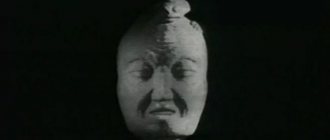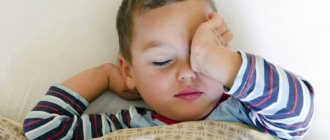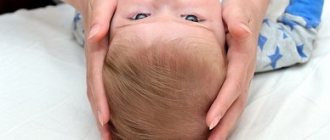What are neuroses in children
Neuroses in children and adolescents are a group of reversible borderline disorders of the nervous system that arise due to the influence of a psychotropic factor.
Traumatic factors include interpersonal and intrapersonal conflicts, stress, excessive mental and physical activity. Neuroses in children develop in 35% of all children attending preschool institutions. The largest number is observed in children of senior and primary school age, as well as preschool children, while it is more common among boys than among girls.
The manifestation of neuroses in children is mainly associated with a violation of the psycho-emotional sphere and occurs from 3-16 years. With the development of such a borderline state, there are no increasing changes in personality or dementia.
Neuroses in teenagers
According to official data from the World Health Organization, the number of neuroses has increased 24 times over the past 65 years, while the number of mental illnesses has increased only 1.6 times. Among adolescents with neuropsychic pathology, 36% suffer from neuroses.— Vladimir Nikolaevich, how often do neuroses occur in adolescents? — Neuroses in children and adolescents are the most common type of neuropsychic pathology. As psychogenic diseases of the developing personality, neuroses in an affectively acute form reflect many problems of human relationships, primarily understanding and communication between people, the search for one’s “I”, optimal ways of self-expression, self-affirmation, recognition and love.
- What are the causes of neuroses in adolescents? - Initially, neuroses represent an emotional disorder that arises mainly in conditions of disturbed relationships in the family, primarily with the mother, who is usually the person closest to the child in the first years of his life. Relationships with the father play an equally pathogenic role in subsequent years if he is unable to promptly resolve the personal developmental problems of his children. Both parents experience many personal problems, often suffer from neurosis themselves and adhere to dogmatically accepted views on education or those based on past traumatic experiences without taking into account the individual uniqueness and age-related needs of the children. All this gives reason to consider a child’s neurotic, psychogenic in origin illness as a kind of clinical and psychological reflection of the personal problems of parents, which often begin in the ancestral family. Neuroses are a unique clinical and psychological phenomenon that develops over the life of three generations - grandparents, parents and children.
Neurosis is a psychogenic disease of a developing personality, therefore it is influenced by everything that can complicate the process of personality formation in children and contribute to a general increase in neuropsychic stress in parents. These factors include reasons of a socio-psychological, socio-cultural and socio-economic nature.
Among the socio-psychological factors, the presence of an only child in the family or the emotional isolation of one of the children, if there are several of them, and insufficient psychological compatibility of parents and children deserve attention; conflicts; unilateral predominance (dominance) of one of the adults (usually the mother or maternal grandmother, if she lives in the family); reversal or inversion of traditional family roles; low productivity of joint activities of family members and, finally, the well-known isolation of the family in the sphere of external contacts.
Socio-cultural factors include problems associated with living in a big city; the acceleration of the pace of modern life; lack of time; crowding; some impersonality and the increasingly complex nature of interpersonal relationships; insufficient conditions for proper rest and release of emotional stress.
Socio-economic factors include unsatisfactory living conditions of a young family; parents' employment; the mother going to work early and placing the child in a nursery or inviting others to care for him.
It should be emphasized the unfavorable influence on the upbringing of children by those mothers who seek to free themselves from their family responsibilities, considering them burdensome and not corresponding, in their view, to the modern “emancipated” position of women. These overly categorical, principled and businesslike women do not attach importance to tender and warm feelings in relationships with children, consider family to be an obstacle to achieving ambitious plans and easily decide to break off family relationships. In some ways, this transitional stage results in an increase in psychopathic traits in the character of such women, who were often the only children in the family. At the same time, the increase in neuropsychic stress among working and family-occupied women is accompanied by their greater neuroticism, which also negatively affects the upbringing of children and the formation of their personality. The increase in the number of neuroses in adults, especially in parents, affects the increase in the number of neuroses in children, giving rise to a kind of vicious circle, which can only be broken by the simultaneous provision of effective and accessible psychotherapeutic and psychoprophylactic assistance to all its participants.
— What symptoms appear in a patient with neurosis? — Most often these are sleep disorders, difficulties in performing usual work, fatigue, weakness, irritability, tearfulness, low mood, anxiety, fears, obsessive movements, blood pressure fluctuations, sweaty palms, cold hands and feet . A common form of neuroses in children and adolescents is logoneurosis or stuttering. It should be noted that these are reversible disorders.
—
Does this mean that neurosis is curable? - In most cases, neurosis is completely curable. However, getting rid of neurosis requires patience and effort.
— Who should a patient with neurosis contact? — Of course, first of all, it is necessary to consult with a psychotherapist. Neuroses are called the “realm of psychotherapy”, because with the help of medications, you can “smooth out” only the symptoms of the disease, but at the same time, as it were, “drive” the problem that led to neurosis deeper. A person’s headaches and irritability will disappear, weakness and fatigue will decrease, their mood will improve, and their sleep will normalize. But if he returns to a traumatic situation again, the symptoms of the disease will arise with renewed vigor and the neurosis will take a protracted, chronic course.
With the help of psychotherapy, you can change your attitude towards a traumatic situation, i.e. to the cause of the neurosis, and then the illness goes away and the person recovers. When an illness occurs, even if it is not severe, it should still be treated under the supervision of a psychotherapist. The main method of treating neuroses is psychotherapy. Other treatment methods for neuroses can only be of additional importance (massage, physiotherapy, reflexology, psychopharmacotherapy). However, the use of these remedies without the use of psychotherapy often only distracts the attention of patients with neuroses from the true causes of their disorders and creates the illusion of cure without the application of one’s own efforts, which are required when conducting serious psychotherapy. Therefore, improvement will not last long if neurotic problems remain unresolved, and they cannot be solved only with the help of physical methods and medications.
— Vladimir Nikolaevich, what does the term “psychotherapy” mean? — The term “psychotherapy” literally means “treatment of the soul.” In more detail, psychotherapy is the complex influence of the doctor’s psyche on the patient’s psyche, and through it on his entire body, in order to eliminate painful manifestations, change the attitude towards himself, his illness and others.
Today, psychotherapy is an actively developing area of theory and practice all over the world, where medical psychologists and psychotherapists are becoming key figures in solving problems of human relationships, family and intrapersonal conflicts, business and health.
— What is the goal of psychotherapeutic treatment? — The main goal of any psychotherapeutic treatment is to help patients make the necessary changes in their lives. The success or effectiveness of psychotherapy is assessed depending on how persistent and broadly beneficial these changes are for the patient.
— Where in Penza can you get qualified help for a teenager with neurosis? — Teenagers and their parents can receive this type of specialized psychotherapeutic help in a scientific and practical center.
It is easier to prevent a disease than to treat it. Therefore, if your child shows the first signs of neurosis, you need to contact a specialist.
Causes of neuroses in children
The causes of neuroses in children are very diverse, but the most common are family-related ones. Often, conflicts within the home, disharmony in the family, emotional stress and formed mental trauma lead to the state of “neurosis in a child.” Symptoms develop due to the inability of the baby to survive this situation.
The causes of neuroses in children can also arise from intrapersonal conflicts, when there is a contradiction between drives and prohibitive actions. Perhaps neuroses in children arise as a defensive reaction to stress in the body.
Factors that form neuroses in adolescents include psychological predisposition. Certain personality traits, for example, the hysterical type, can shape the development of changes in the nervous system in unfavorable social conditions.
Neuroses in preschool children are often formed as a result of hereditary factors, injuries and diseases. The course of childbirth and pregnancy also plays a big role in defining the concept of neurosis in a child. Symptoms depend on the cause, conditions, age and rate of development of the condition.
Causes of stress in teenagers.
- Adolescent and Youth Health Center
- This is interesting
- Articles
- Causes of stress in...
Starting from the age of 12, a child’s body undergoes rapid changes.
Hormones rule, the body changes, often accompanied by physical ailments and mental suffering. If during this period you do not help your son or daughter learn to cope with emotions, then they will have little chance of developing a harmonious and open personality. It is during adolescence that children acquire an inferiority complex, various phobias, and become withdrawn. Girls think that they are getting fatter, but in fact they are simply growing, and they begin to torment themselves with diets. Boys have complexes because they are too short or too tall, clumsy, unpopular, etc.
Danger, violence, death of loved ones, divorce of parents - very painful situations for growing children. Due to increased suspiciousness, they blame themselves for everything. And if, in addition, parents drink, swear, fight, and become socially dangerous, then first of all this affects the psyche of their children. Add to this school troubles, unfair grades, excessive demands from teachers and parents, conflicts with teachers or classmates - and what is the life of a teenager like? What about first loves and breakups? The intensity of feelings at 12-15 years old goes off scale and can cause tragedies. After all, it seems to them that love without reciprocity makes life meaningless.
Prolonged stress is too dangerous for a teenager. Therefore, the key role in “fighting” stress is played by the help of parents and, of course, qualified assistance from a specialist.
What symptoms can you use to determine whether a child is stressed or not?
- Your child moves away from loved ones and friends and becomes withdrawn. The reason is that self-esteem drops sharply and self-doubt appears.
- Absent-mindedness and forgetfulness. He doesn’t remember what happened yesterday, he’s in the clouds, he can’t concentrate on anything.
- Chronic fatigue, lack of sleep, poor or excessive appetite, apathy, drowsiness.
- Sudden mood swings.
- The emergence of bad habits - smoking, alcohol, morbid addiction to shopping.
How does stress affect a teenager?
- Physical health deteriorates. It has been scientifically proven that people who experienced constant stress in adolescence have a weakened immune system, they are more likely to get sick in adulthood, and more seriously than those who had a relatively prosperous adolescence.
- Mental health is deteriorating.
- If teenage stress is not dealt with, it develops into serious depression.
How to help a teenager overcome stress.
- Feel free to show your son or daughter your boundless love and affection. And although very often grown-up children “run away” from hugs, in fact, they desperately want it, but are embarrassed. Do everything to make him know and feel that you support and understand him.
- Show trust in your child not only in words. Allow him to make decisions on his own, even in difficult situations - it is in them that the personality develops and is formed. Sometimes trust becomes a risk for parents, but doing it differently will only make things worse.
- Talk to your child about overload so that he doesn’t get exhausted trying to be on time everywhere.
I wish you good luck and patience, dear adults!
Psychologist
I.V.Malch
Symptoms of neuroses in children
Neuroses in children have their own characteristics.
They are incomplete, residual with a predominance of somatovegetative disorders.
We can distinguish several groups of obsessions (thoughts, fears, actions), supervaluable ones (fears, ideas), and rituals. Obsessions are pathological fears, thoughts, actions that arise against his will.
The main children's fears include fear of the dark, ugliness (especially in teenage girls), loneliness, etc. The main periods of obsession will be 3, 7, 11-13 years.
Supervaluable ideas, fears, are ideas that stand at the head of all others. For example, fear of death. The child does everything to avoid getting sick, dying, and may be delusional.
Rituals are a child’s perverted reaction to stress with the formation of a defensive reaction in the form of a reflex. For example, before falling asleep, a child checks what is under the sofa, while dropping the handle (on purpose from time to time). The rituals are performed according to the planned plan.
All this is neurosis in a child.
Symptoms can occur at any age, and are preceded by some kind of traumatic situation. Neuroses in children can be accompanied by hysterical fits, a complete lack of sonority of the voice, sudden short-term blindness, various pains throughout the body, limitation of movements, etc.
The manifestations of neuroses in children are different, but have similar causes and symptoms. Neuroses in adolescents can occur in the form of aggression towards oneself (suicide attempts, thoughts), as well as towards others.
Methods of drug treatment of VSD in adolescents
The main way to relieve painful conditions associated with exacerbation of vegetative-vascular dystonia in adolescents and young children is to reduce stress levels and develop stress resistance as a method of resisting neuroses. Despite this, for more complex manifestations and symptoms such as regular headaches, fainting, sleep disorders, lack of appetite, tearfulness and irritability, decreased emotional background, the doctor may prescribe a course of the following medications:
- sedatives that calm the nervous system;
- antidepressants that improve the overall emotional state;
- complexes of vitamins and minerals that strengthen the body as a whole.
Treatment is carried out only under the supervision of a neurologist and only after an examination that can reveal abnormalities in the condition of the circulatory system.
With age, most symptoms of vegetative-vascular dystonia in adolescents go away on their own. However, one cannot rely only on this. By using the full range of preventive methods, you can reduce the need for treatment or make it more gentle, but you cannot completely eliminate the use of medications or follow general recommendations. General recommendations include:
- timely diagnosis and treatment of any infectious diseases;
- establishing and maintaining a daily routine;
- proper distribution of the load over a certain period of time to reduce fatigue;
- regular walks and outdoor activities;
- reducing time spent on a computer, tablet, phone;
- high-quality and regular massage - therapeutic and relaxing;
- monitoring intracranial pressure and the condition of the spine, including posture correction.
Exacerbation of vegetative-vascular dystonia in adolescents can cause temporary exemption from physical education, as well as a reason for registering with a neurologist. In addition, regular examination helps to identify VSD in adolescents during the “lull” period and promptly prescribe treatment for the vascular system.
Treatment of neuroses in children
Neuroses in children should be corrected under the supervision of a neurologist, since such a condition can provoke the development of mental illness.
All conditions associated with behavioral disorders, hysterical states, sudden deterioration of the condition (pain, short-term loss of vision, movement disorders), pathological habitual movements (children's tics) require treatment. Neuroses in children are treated with medication.
The observation is also carried out by a psychiatrist, since neurosis can serve as an initial symptom of another disease. Neuroses in preschool children require close attention from parents, since the main cause is related to the family environment or the environment of a preschool institution.
Physiotherapeutic treatment is carried out. Neuroses in children respond well to physiotherapy methods; a positive effect from TCMT (transcranial magnetic therapy) has been found.
Childhood neurasthenia: what is the essence of the disorder
Neuroses in childhood and adolescence are quite common. One of their varieties is neurasthenia.
In the first years of life, a child actively explores the world. No matter how much his family protects him, no one manages to avoid conflict, stress and other unpleasant situations. Children, depending on their temperament and personal resistance to stress, react differently to stimuli.
The baby’s nervous system cannot always cope with the tension that comes from stressful situations happening around. Then it fails, and as a result, neurasthenia develops.
It can progress in three directions:
- hypersthenic – increased activity, noisy behavior, emotional arousal. The child loses self-control and shows dissatisfaction for any reason. Constantly changes types of activities, but cannot concentrate on any one activity. Bad mood and irritability predominate;
- hyposthenic – weakness, tearfulness, fearful state. Accompanied by increased fatigue. There is lethargy in movements, a decrease in interest in things that previously caused a surge of emotions;
- transitional - neurasthenia, in which the symptoms and signs of the first two types in children and adolescents appear alternately. There are serious sleep disorders and exhaustion of the nervous system.
Parents see changes occurring in their child, but often do not understand the reason for them. They perceive the first signs of neurological disorders as a repeated accident or a bad habit. However, this disease requires close attention from adults; they are the ones who are able to notice initial changes in behavior and communication and promptly contact a specialist.
Prevention of neuroses in children
It comes down to reducing the child’s physical and mental stress, creating a favorable home environment, the baby’s positive emotions will help cope with the illness. Neuroses in adolescents are prevented through long conversations with a psychologist and parents.
If prevention is not carried out correctly and the symptoms continue to increase, then this condition requires treatment. Neuroses in children can lead to maladaptation of the child in the team. Neuroses in adolescents are associated with the desire for perfection, youthful maximalism and require understanding from parents.
Kake undergoes diagnosis and treatment of childhood neuroses
- We diagnose the disease. We talk with the child in a playful way, observe behavior, and analyze drawings. We talk with parents, find out about the situation in the family, the child’s behavior.
- We examine the parents. If we need to clarify the diagnosis, we send parents and relatives for examination to identify a genetic predisposition.
- We provide psychotherapy. We provide individual consultations and family therapy. We select rational therapy, art therapy, gaming, autogenic training and other methods of influence.
- We prescribe medication. We prescribe general strengthening and dehydration agents, nootropics, and drugs that reduce asthenia.
Treatment of obsessive movement syndrome in a child
If you ignore “strange or bad habits” and do nothing, the quality of life of a child with obsessive movement disorder worsens. He can physically harm himself: scratch his hands until they bleed, tear out a clump of hair, etc. In addition, sooner or later moral exhaustion may set in, because living in constant anxiety and fear is very difficult for an adult, let alone a fragile child’s psyche. This state of affairs is fraught with nervous breakdowns, depression, problems with social adaptation, and isolation. Often a child becomes a hostage to his own rituals. Over time, they can grow, making life simply unbearable.
The difficulty of treating obsessive movement syndrome in children is that at an early age they are not able to adequately assess their condition. That is, an adult with obsessive-compulsive disorder in 80% of cases realizes the irrationality of his behavior, the meaninglessness and uselessness of his own rituals, understands that something is wrong with him, and sooner or later he goes to a specialist. The child cannot understand and analyze what is happening to him.
If you notice that your child often and involuntarily makes any movements (actions) or has strange habits, you need to carefully observe him and try to independently identify the reasons for such behavior. Very often, the cause of obsessive movement syndrome in children is parental conflicts. A child suffering from neurosis subconsciously tries to attract the attention of others to the problem he has. The most important thing is to identify the traumatic factor and eliminate it. First, you need to improve the psychological climate in the family, try to minimize conflict situations and provide the child with calm, comfortable living conditions. It is very important not to scold for obsessive movements, to remember that this is not self-indulgence, not a whim or a protest. This is a mental disorder, and the child needs help. In cases where parents are unable to find out on their own what is causing the child’s obsessive movements, they should immediately contact a medical or child psychologist.
To eliminate the syndrome of obsessive movements in children, psychologists at our Center use methods of play therapy, sand therapy, fairy tale therapy, and art therapy. In addition, parents must be consulted on creating a psychologically comfortable environment for the child in the family and, if necessary, correcting the parenting style (if these factors formed the basis of childhood neurosis). This approach helps to quickly relieve increased anxiety, neutralize the consequences of psychological trauma (if any), teach the child to cope with stress in a more constructive way, and increase adaptive resources. When receiving timely support from a specialist, obsessive movements syndrome is relieved in a short time and goes away without a trace.
Make an appointment with a child psychologist by phone or leave a request on the website.











